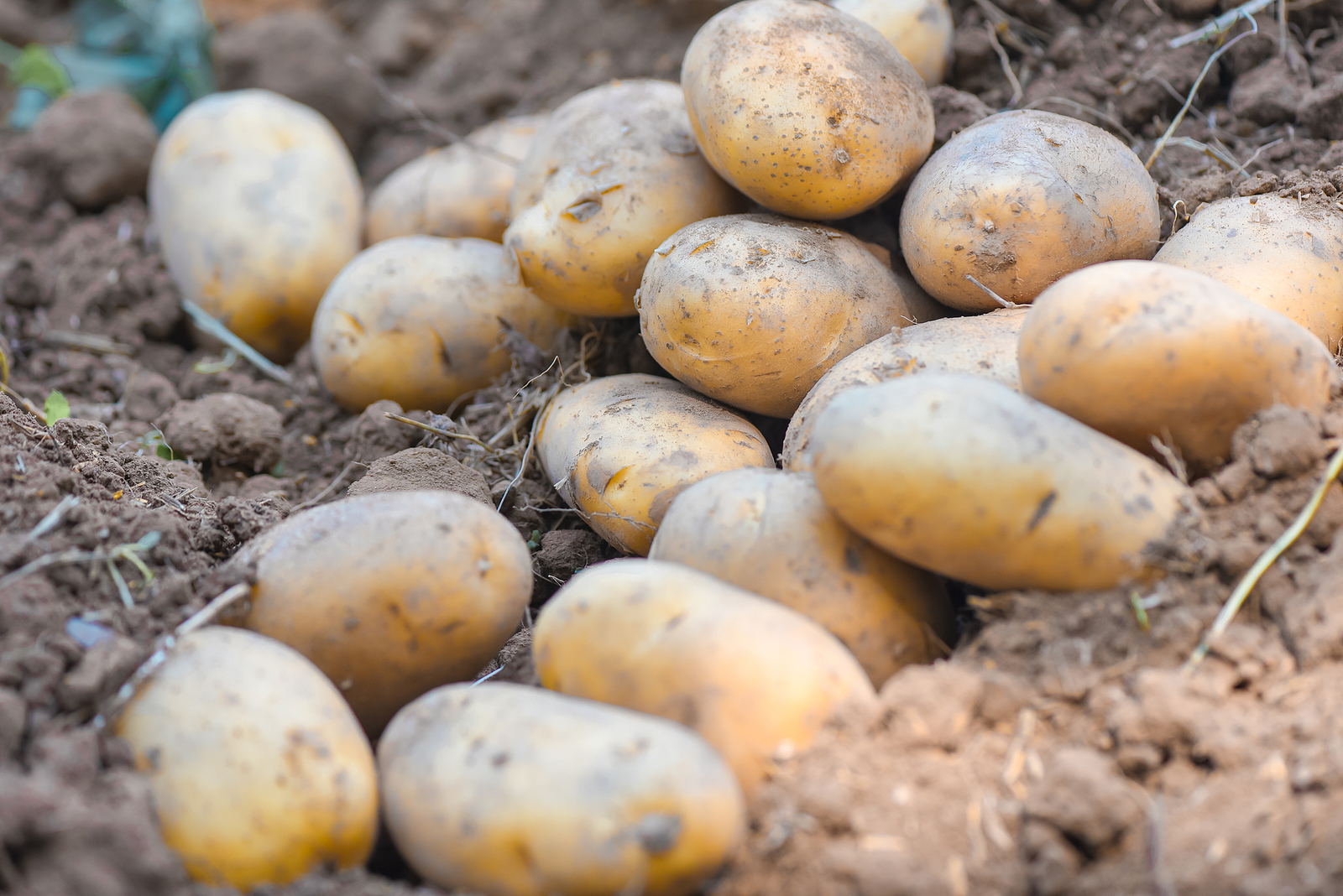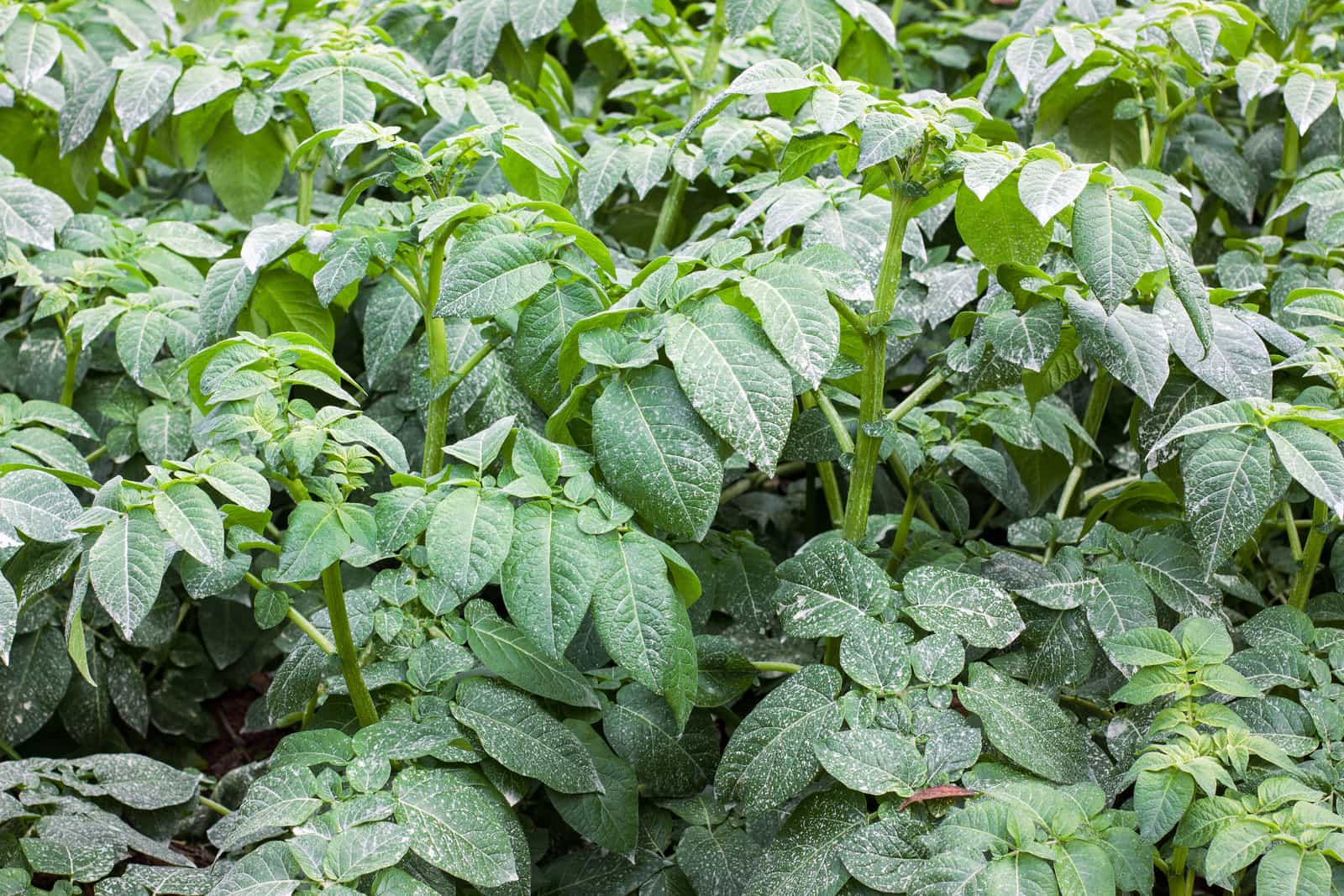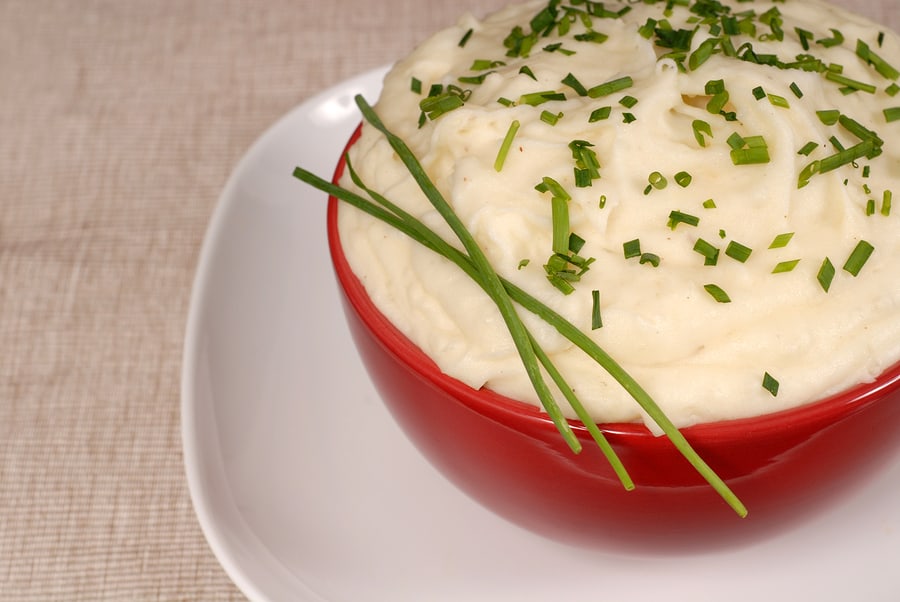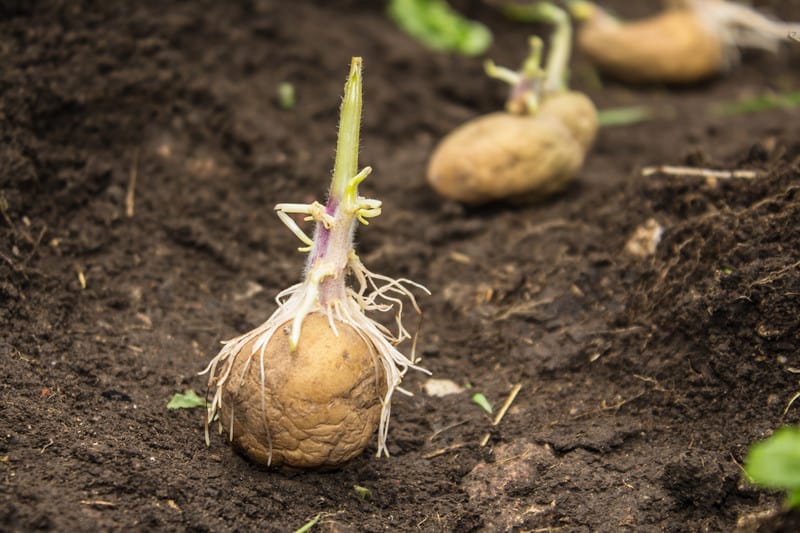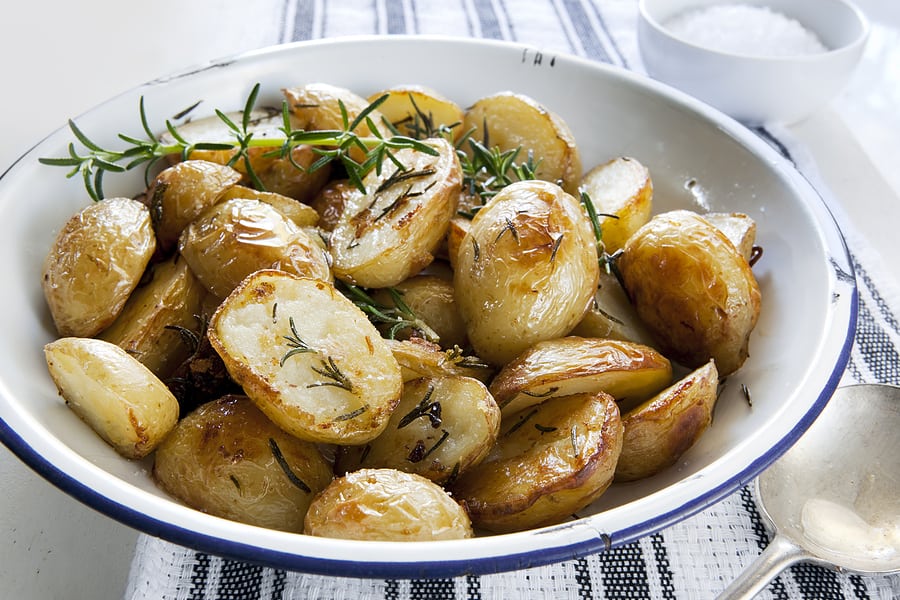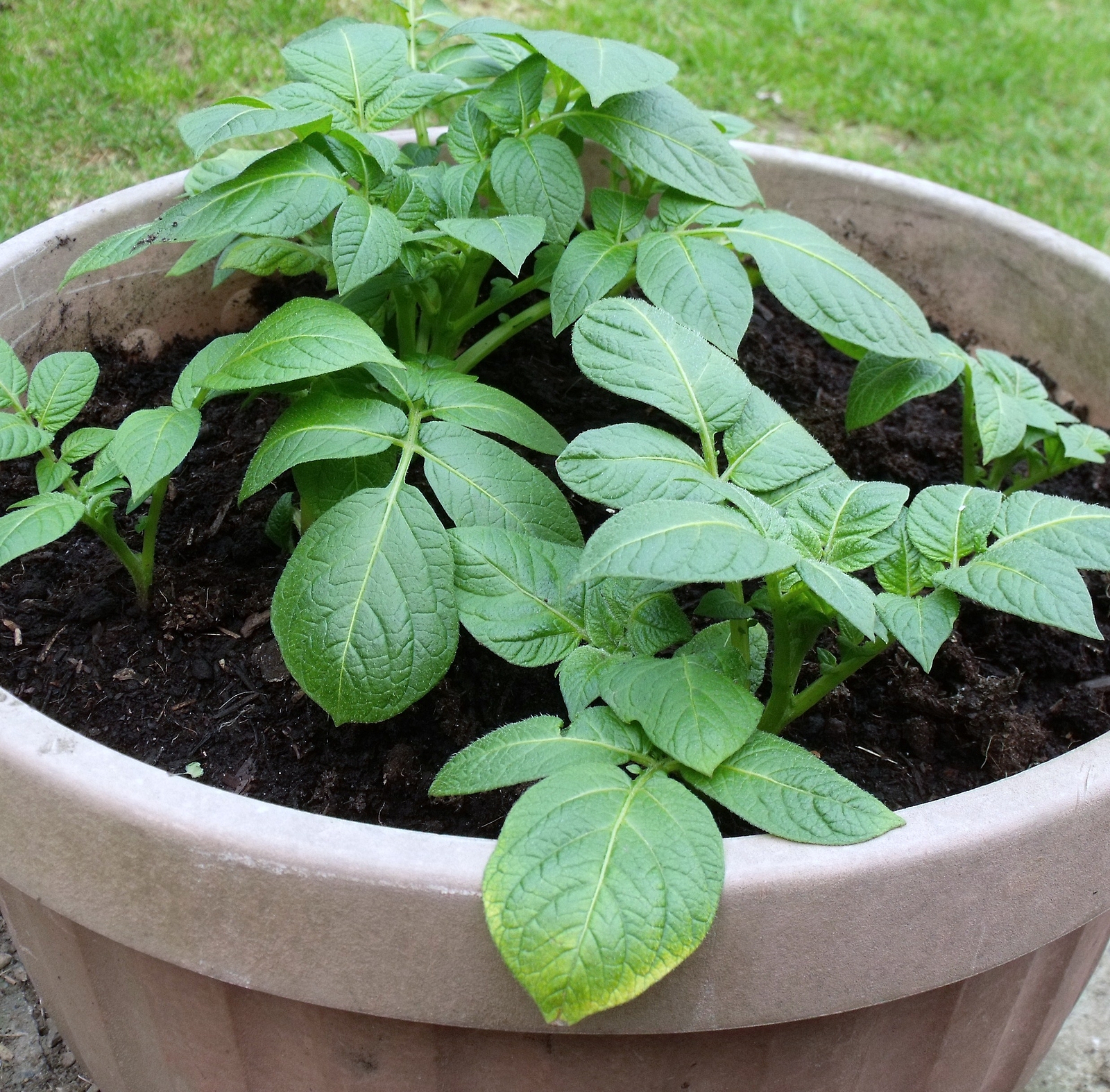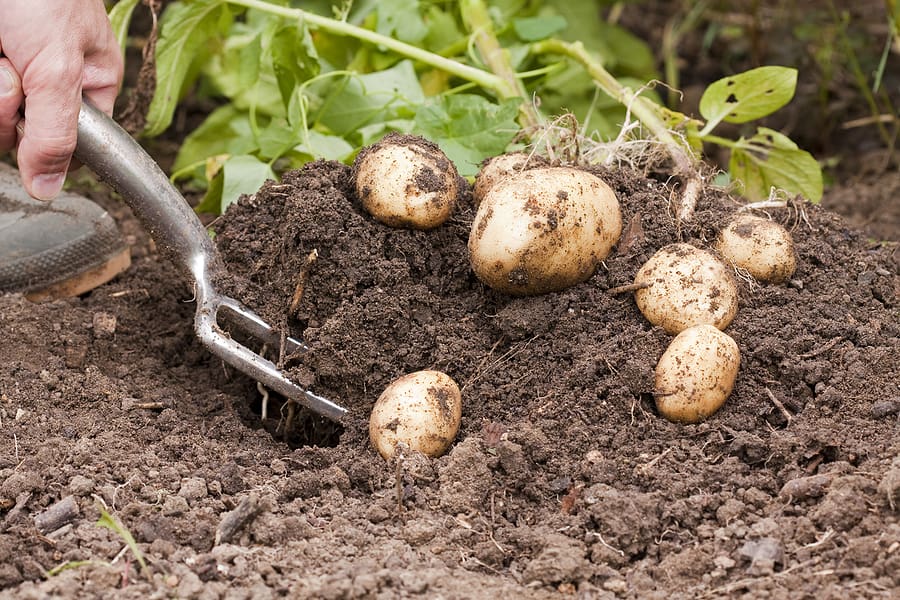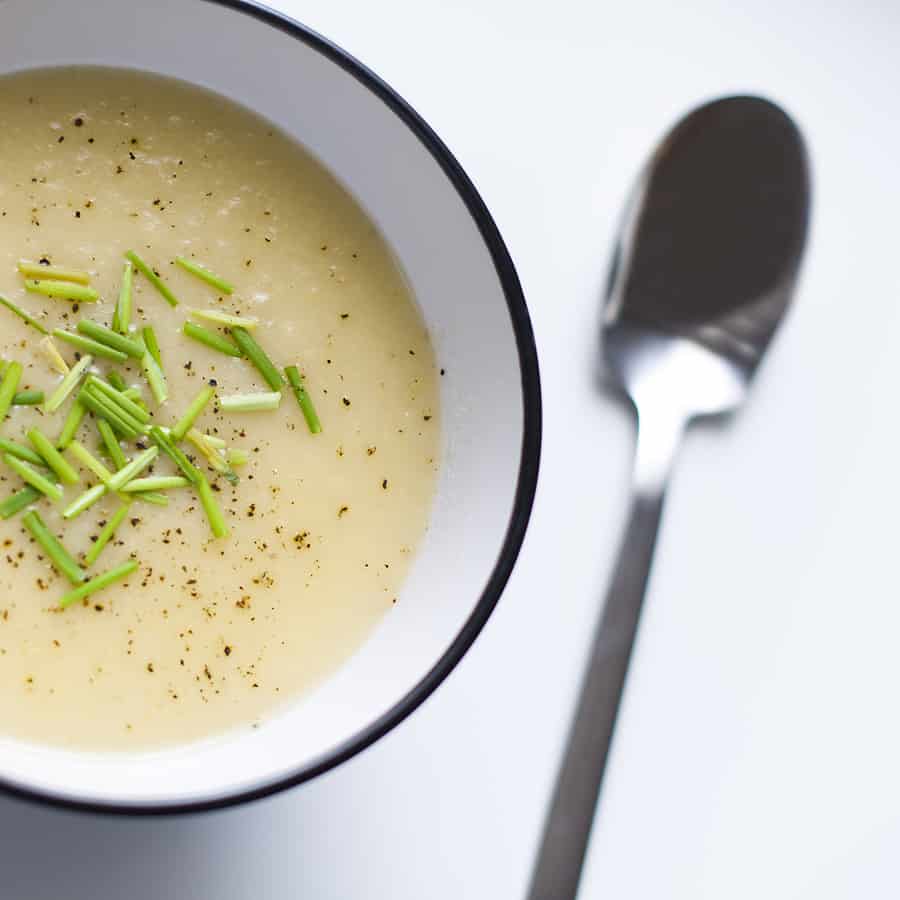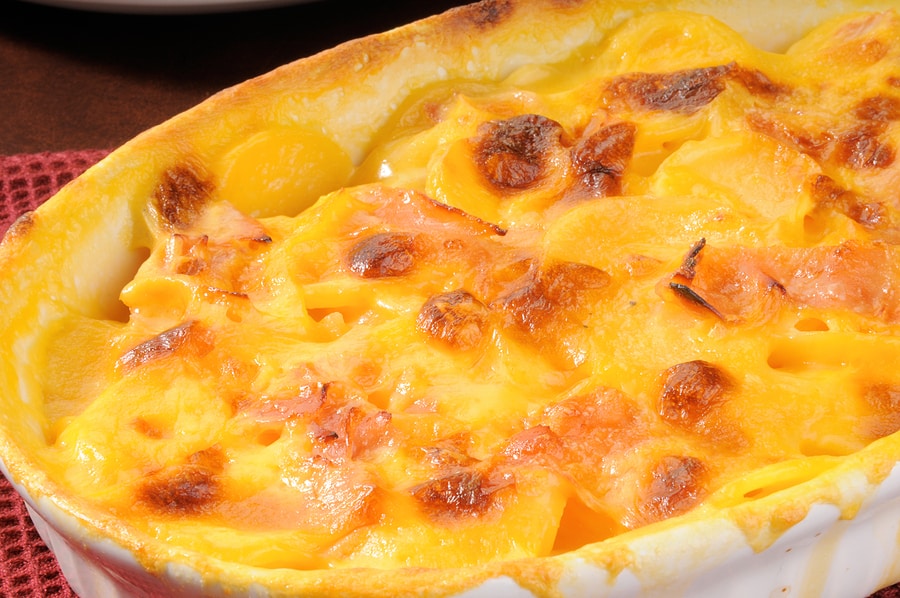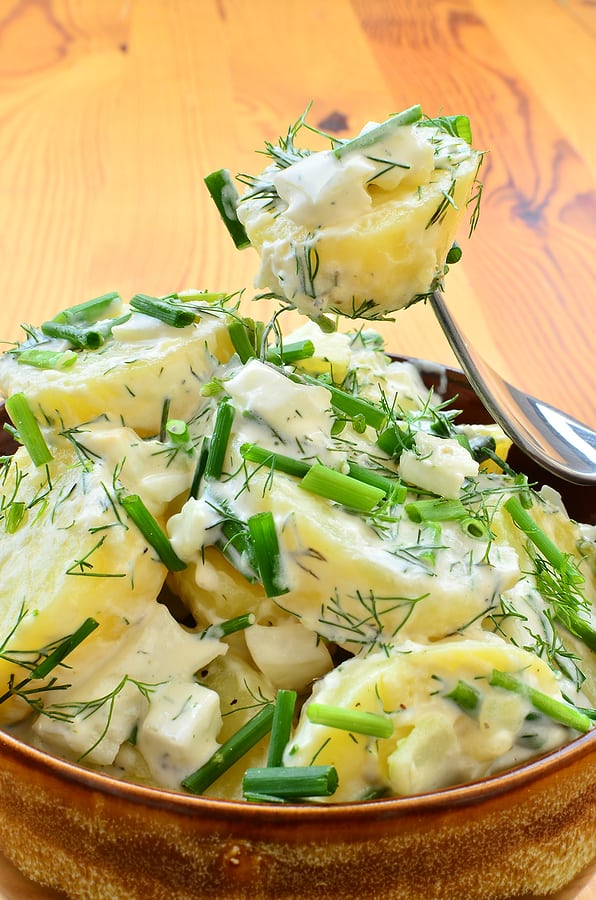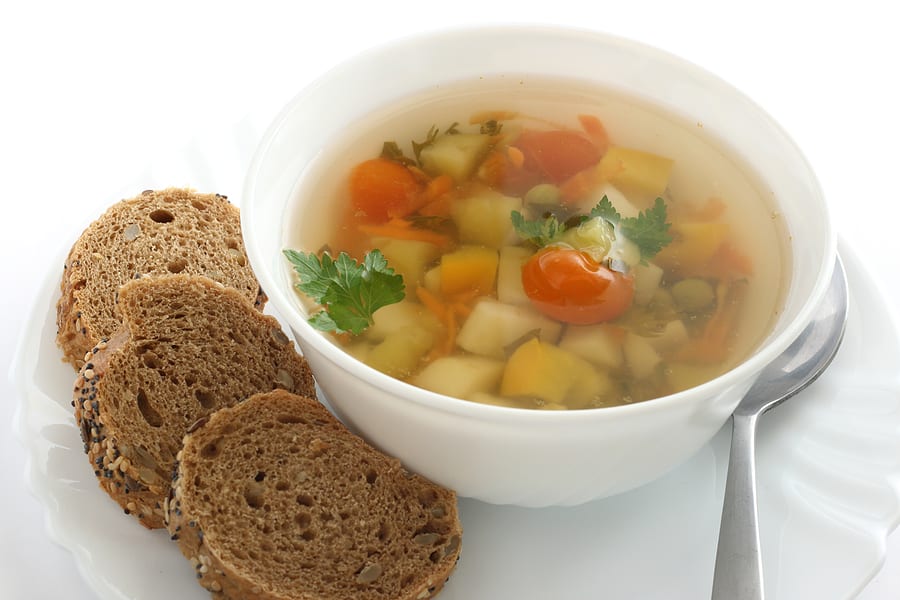Potatoes
Latest stories
More stories
-
Seven Ways to Cook and Serve Potatoes
Potatoes are not fattening. Potatoes are high in fiber content and contain quality complex carbohydrates that will fill you up but not fill you out. A medium-sized baked potato contains around 90 calories, about the same as an apple. However, potatoes drenched in butter or smothered in gravy or the fat in the steak you […] More
-
Seed Potato Starting Tips
Potatoes are grown from other potatoes. Small, whole potatoes are called “seed potatoes”. Plant seed potatoes to grow new potato plants. You can also grow potato plants from cut pieces of larger potatoes. Make sure that you plant seed potatoes or potato pieces that have two or three dormant buds, called “eyes”. Eyes are slightly […] More
-
in Prepare, Recipes, Side Dishes
How to Cook New Potatoes with No Recipe
New potatoes make for sweet, moist eating. You can serve them steamed, sautéed, boiled, baked, roasted, or grilled. They can be served tossed in butter or olive oil or as a dip with butter or sour cream or horseradish or served as a side dish with chicken, lamb, steaks or burgers, or grilled fish. New […] More
-
Grow Potatoes in Pots and Grow Bags: Seven Easy Steps
Growing potatoes in pots, grow bags, and containers is an excellent way to produce fresh, homegrown spuds without the need for a large plot of land. Growing potatoes in pots and containers is a great option for small gardeners, and the results can be very rewarding. With a little care and attention, you can enjoy […] More
-
How to Harvest and Store Potatoes
Harvest potatoes young or mature. Mature, full-size potatoes are called maincrop potatoes. Maincrop potatoes are often cured and stored for later use. Maincrop potatoes are ready for harvest when most of the top foliage has withered Small, round, immature potatoes are often called “new potatoes.” New potatoes are usually eaten skin and all. New or […] More
-
6 Easy Steps to Grow Organic Potatoes
Organic potatoes are a great addition to any home garden. Not only are they packed with vitamins, minerals, and fiber, but they also provide a unique and flavorful cooking experience. Growing organic potatoes in your home garden is both rewarding and easy as long as you are well-versed in how to grow potatoes. Here are […] More
-
Potato-Leek Soup Simply Made
Print Potato-Leek Soup Author Steve Albert Potato-leek soup is simply made with potatoes and leeks from the garden. You can leave the skins on the potatoes if you like. Ingredients 3 parts finely sliced potatoes; use boiling or Yellow Finn potatoes, scrubbed well. 2 parts sliced leeks (or onions); use only the white parts. Milk […] More
-
in Prepare, Recipes, Side Dishes
How to Make Cabbage Colcannon
Cabbage colcannon is a traditional Irish dish of mashed potatoes with milk, butter, and cooked finely chopped onions and cabbage. Easily you can substitute leeks for the onions and kale for the cabbage. Colcannon is a warming and hearty dish commonly served alongside corned beef, boiled pork, or bacon. The Irish often serve colcannon on […] More
-
in Casseroles, Main Courses, Prepare, Recipes
Ham, Potato, and Cheese Gratin
The ham and cheese and potato gratin is a flavorful and sustaining winter dish. I usually call on this recipe a day or two after a big baked ham dinner by simply reserving 1 or 2 pounds of ¼-inch ham slices. But you can pick up a 1 to 2 pound ham steak at the […] More
-
How to Make Seasonal and Flavorful Potato Salad
Potato salad is a summer classic—but it’s also a spring and fall and winter classic. Some like it moist and creamy. Some like it dry and crumbly. Some like it dressed in egg-rich mayonnaise. Some like it dressed in oil and vinegar. Some like it with sweet relish and a dash of sugar. Some like […] More
-
Yellow Potato Side Dish and Soup
Yellow potatoes like ‘Yukon Gold’ and ‘Yellow Finn’ are ideal for boiling and using in salads and gratins or adding raw to stews. They are moist with a dense flesh and low in starch which means they will hold their shape cooked. You can boil yellow potatoes whole and unpeeled or cut and unpeeled or […] More

